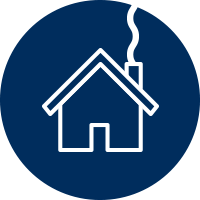Cooperation by Design: A Partnership in Learning @ SWECHS
Abstract
This project called Cooperation by Design: A Partnership in Learning @ SWECHS (Southwest Early College High School) is designed as a fully online asynchronous learning website to facilitate knowledge of cooperative learning and its impact on student engagement for high school teachers at SWECHS. SWECHS is expected to develop student led inquiry based learning modules in the near future, therefore it is necessary to develop teacher knowledge, understanding and systems of cooperative learning.
I.General Project Goals
Overarching goal : The overall goal of this project is to facilitate the instruction of knowledge of cooperative learning for teachers at Name Paul’s school here.
Training Goal: The goal of this training is to establish a structured resource for teachers to develop their understanding and background knowledge of the components of cooperative learning as developed by Johnson and Johnson (1993). While not a goal, the school is looking to build a common foundation of cooperative learning among the teachers and staff to move forward with the vision of becoming a cooperative learning campus.
Stretch Goal : Experienced teachers who implement cooperative learning develop and model up to three lessons for their peers throughout the year aligned with the objectives of this training.
We will develop and design a website with resources the target audience will need to accomplish the training goal and subsequent objectives (found in section III). This is similar to the service eStudio or the engage website for cooperative learning. Cooperative learning will be explained so that the target audience can gain knowledge about the definition, types of models, teaching the cooperative learning process, and resources to implement cooperative learning in their classroom.
Currently there are few online resources to assist educational professionals in developing and implementing collaborative learning. While Johnson and Johnson (1993) are considered pioneers in the development of a systematic model, the opportunity to build background knowledge from inception to implementation is limited to university graduate level programs. Some websites such as Teacher Vision offer information about collaborative learning with guidance on implementing slowly to build momentum. Both of these options are helpful, but require a great deal of self-motivation to find and expense (such as the graduate level work) to acquire knowledge. The purpose built website will give teachers an ongoing resource to access.
II. Target Audience
Target Audience
This section includes brief summaries of the intended audience. Primary and secondary audiences, if any, should be described. Include information on how their skills or knowledge will be impacted as a result of the introduction of the new product or process. Paul will complete this.
III. Objectives
This section should describe exactly what the target audience will be be able to do as a result of the new product or process. Each objective should be listed.- Michelle and Laura
IV. Project Details
All of us have some part of this
Brief summaries of needs and task analyses, if any- Michelle
Content:
Definition of cooperative learning.
Brief summaries of content and suggested treatment, if applicable- Michelle, Laura, Paul
Description of anticipated project team organization, especially reporting relationships among the team and other players- Laura
Description of your ultimate client- Paul
Description of required development process and revision cycles- Laura
Listing of expected deliverables, if appropriate- Laura, Paul, Michelle
Information on standards of quality and quantity- Michelle
Timeline for the expected delivery of prototypes and final product (using template provided by Dr. Corbeil) -Paul
V. Constraints on Budget, Schedule and Design
Resources
This section should describe:
How much money may be spent on this project (budget boundaries), if applicable
Specific dates for completion of milestones such as: the analysis, design plans, drafts, test sessions, master deliverables, and reproduced copies to the field.
Implementation plans ( locations, dates, types and numbers of instructors,etc)
Constraints on the design such as a need to deliver the training in a self-study format, on interactive videodisc, etc
VI. Resources
Constraints on Budget, Schedule, and Design
This section should describe the resources needed in order to complete the project. Specifically, it should include a description of the subject matter experts, market research, technical documentation, equipment or facilities, and any other resources that will required during the development process.
VII. Project Evaluation Criteria
Criteria for Evaluating Success of the Project
Should get from client- but we all need to decide- Laura/ Paul
This is a statement of specifically how the completed product or process will be judged by you and/or your client to be successful.
X. Terms and Conditions
Terms and Conditions
Attach blank contract or spell out special conditions/requirements the consultant/Service Provider must meet.


